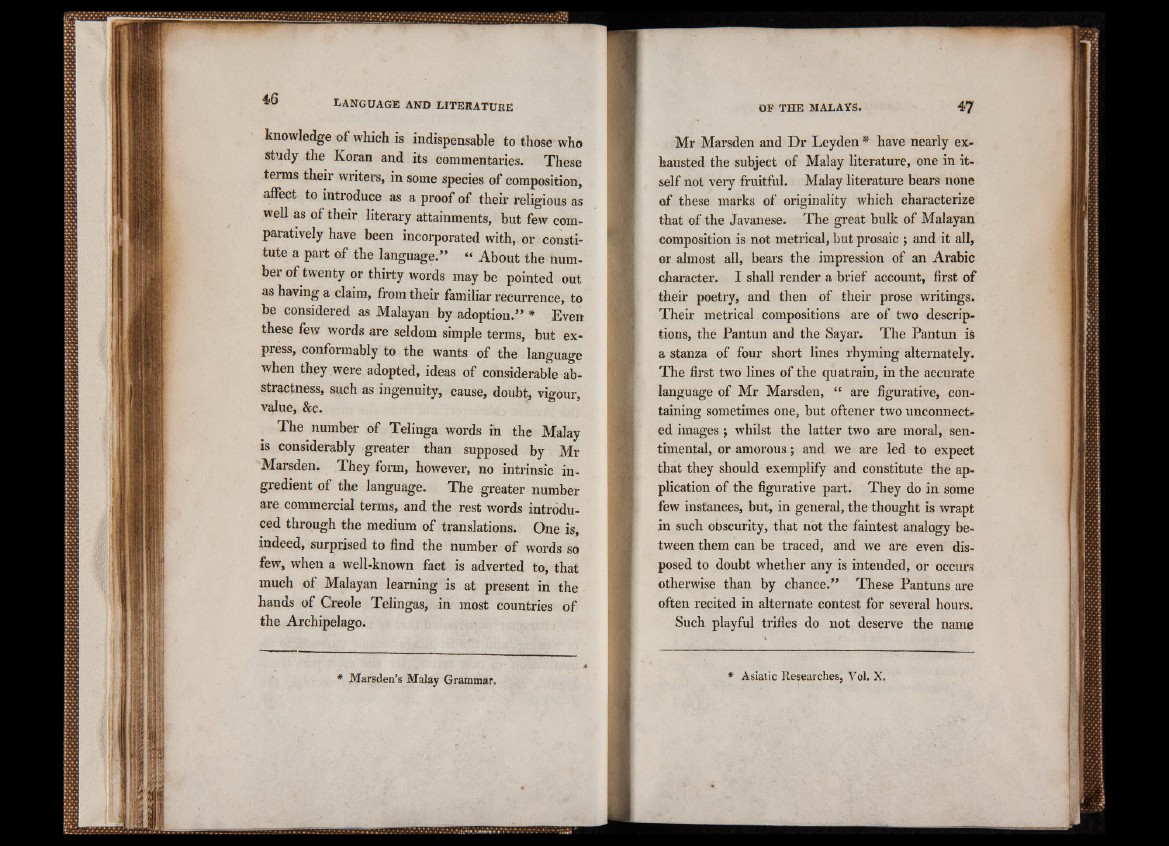
knowledge of which is indispensable to those who
study the Koran and its commentaries. These
terms their writers, in some species of composition,
affect to introduce as a proof of their religious as
well as of their literary attainments, but few comparatively
have been incorporated with, or constitute
a part of the language.” “ About the number
of twenty or thirty words may be pointed out
as having a claim, from their familiar recurrence, to
be considered as Malayan by adoption.” * Even
these lew words are seldom simple terms, but express,
conformably to the wants of the language
when they were adopted, ideas of considerable abstractness,
such as ingenuity, cause, doubt, vigour,
value, &c.
The number of Telinga words in the Malay
is considerably greater than supposed by Mr
Marsden. They form, however, no intrinsic ingredient
of the language. The greater number
are commercial terms, and the rest words introduced
through the medium of translations. One is,
indeed, surprised to find the number of words so
few, when a well-known fact is adverted to, that
much of Malayan learning is at present in the
hands of Creole Telingas, in most countries of
the Archipelago.
* Marsden’s Malay Grammar.
Mr Marsden and Dr Leyden * have nearly exhausted
the subject of Malay literature, one in itself
not very fruitful. Malay literature bears none
of these marks of originality which characterize
that of the Javanese. The great bulk of Malayan
composition is not metrical, but prosaic ; and it all,
or almost all, bears the impression of an Arabic
character. I shall render a brief account, first of
their poetry, and then of their prose writings.
Their metrical compositions are of two descriptions,
the Pantun and the Sayar. The Pantun is
a stanza of four short lines rhyming alternately.
The first two lines of the quatrain, in the accurate
language of Mr Marsden, “ are figurative, con-<
taining sometimes one, but oftener two unconnected
images ; whilst the latter two are moral, sentimental,
or amorous; and we are led to expect
that they should exemplify and constitute the application
of the figurative part. They do in some
few instances, but, in general, the thought is wrapt
in such obscurity, that not the faintest analogy between
them can be traced, and we are even disposed
to doubt whether any is intended, or occurs
otherwise than by chance.” These Pantuns are
often recited in alternate contest for several hours.
Such playful trifles do not deserve the name
* Asiatic Researches, Vol. X.